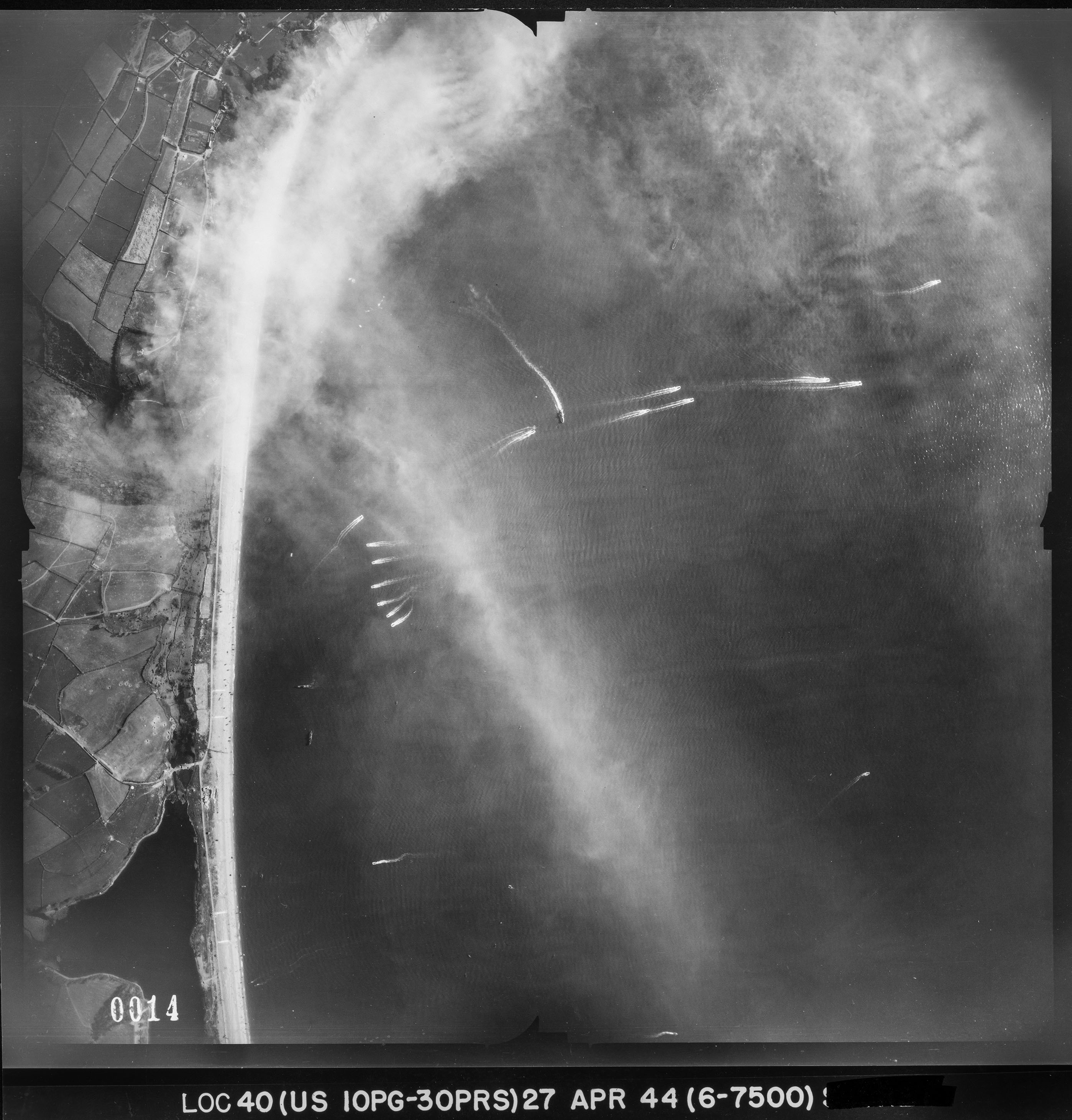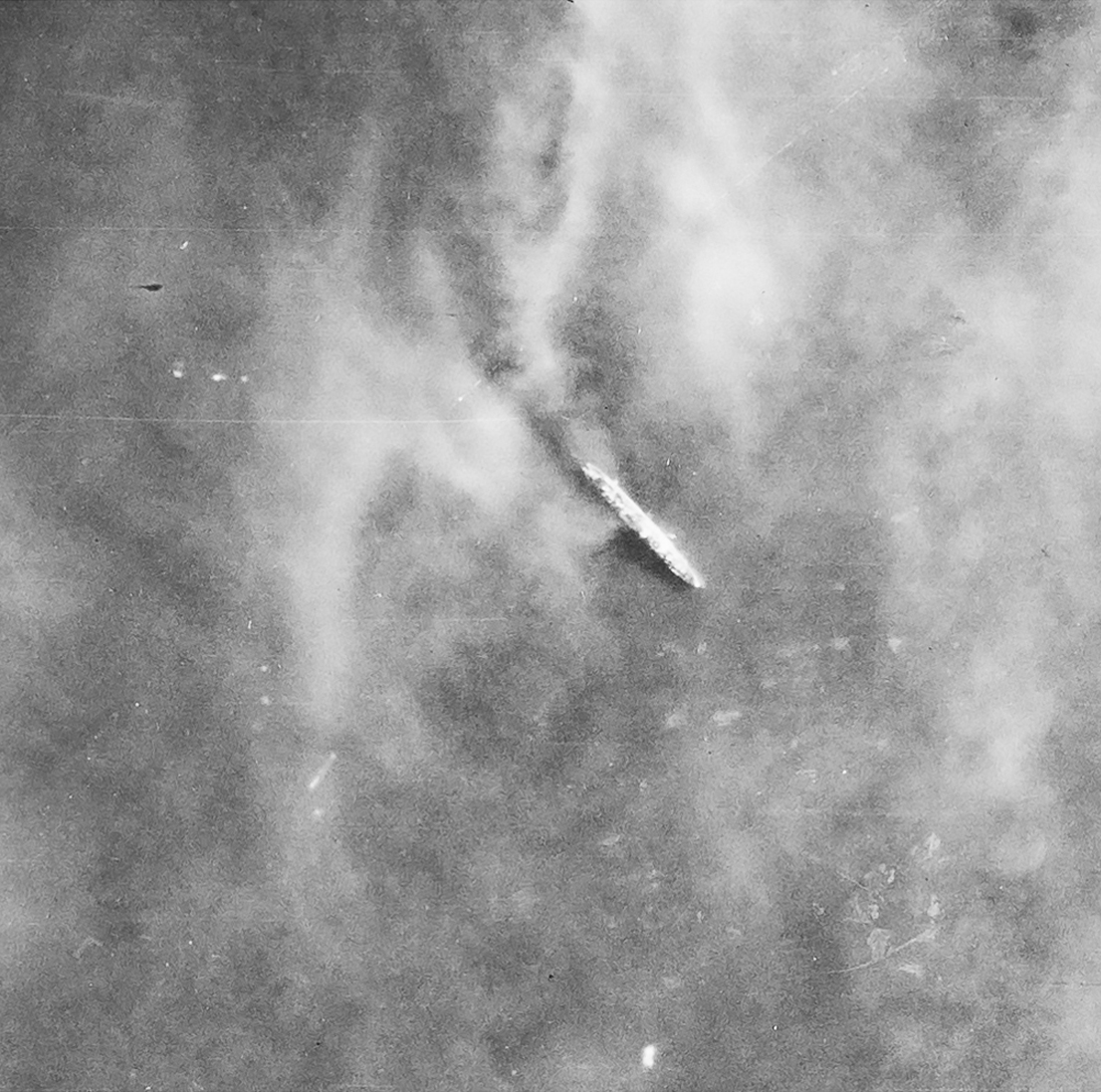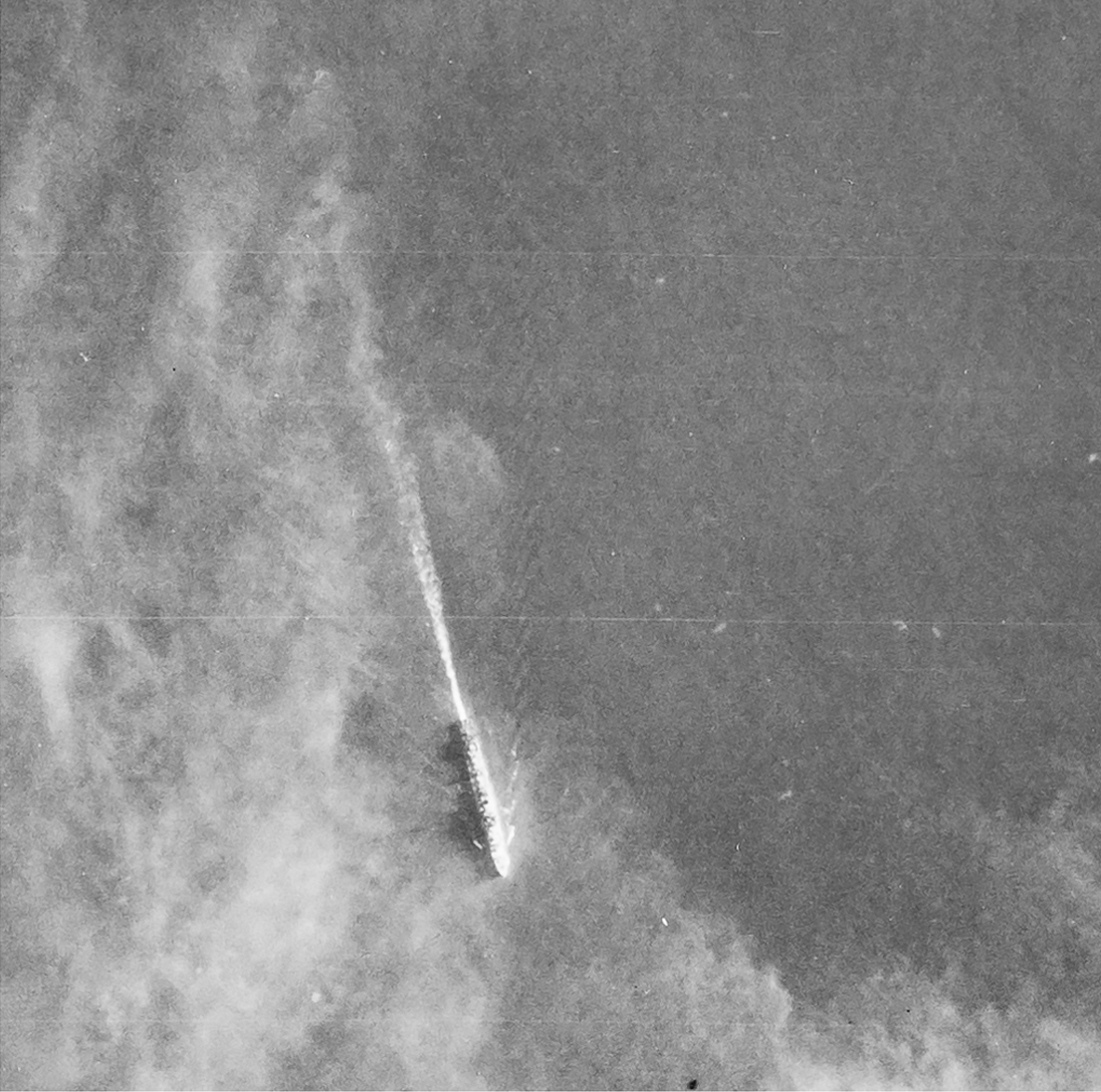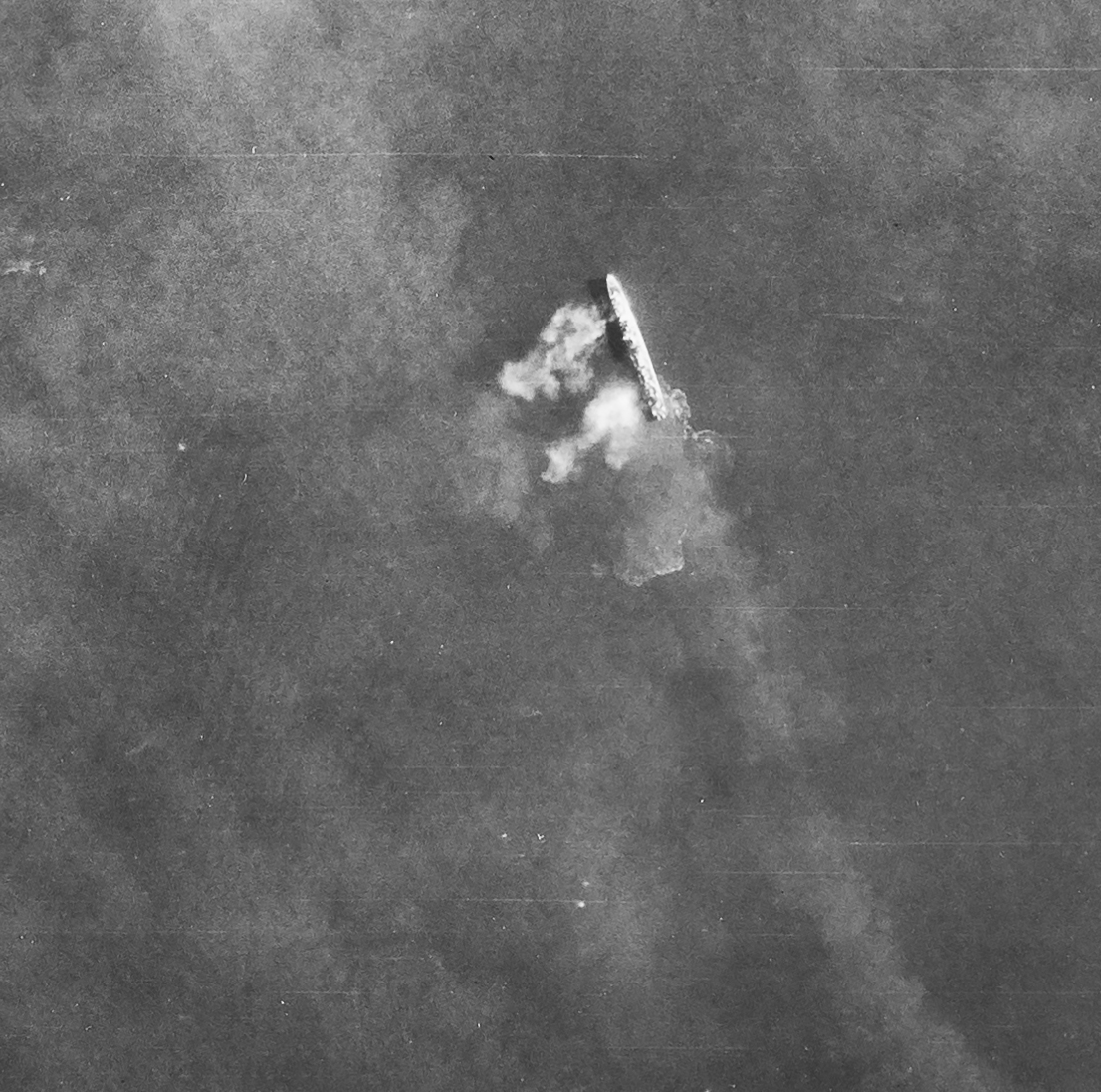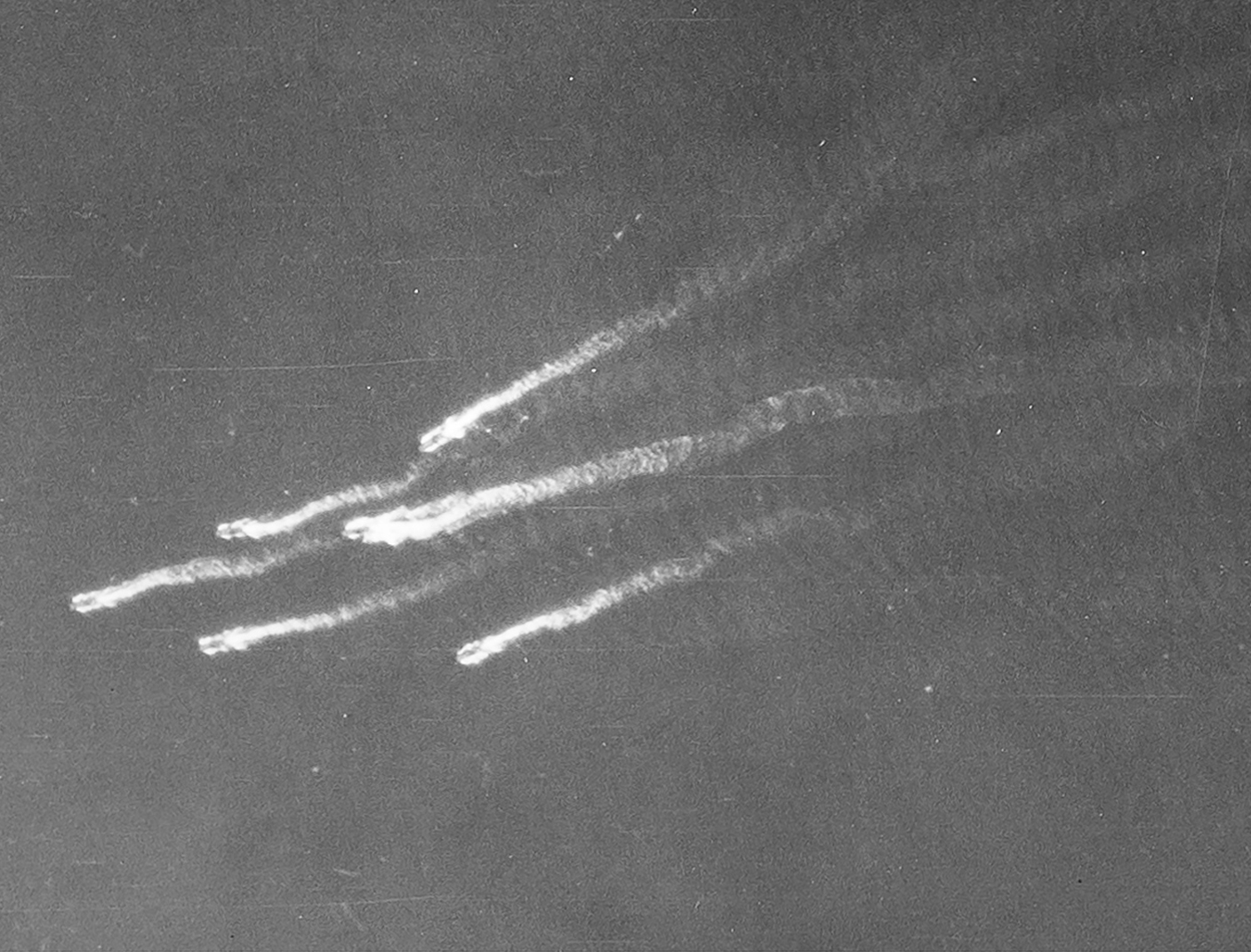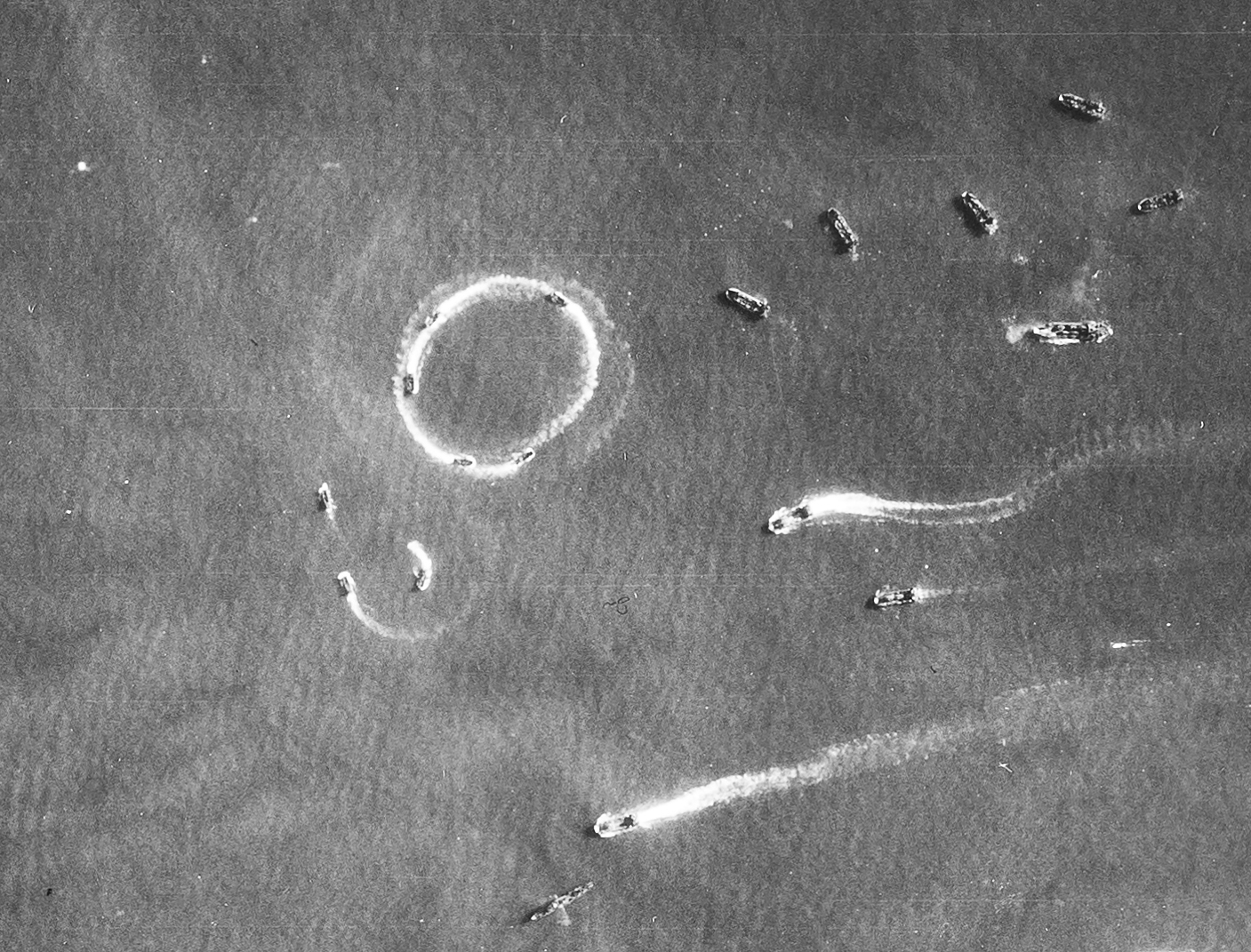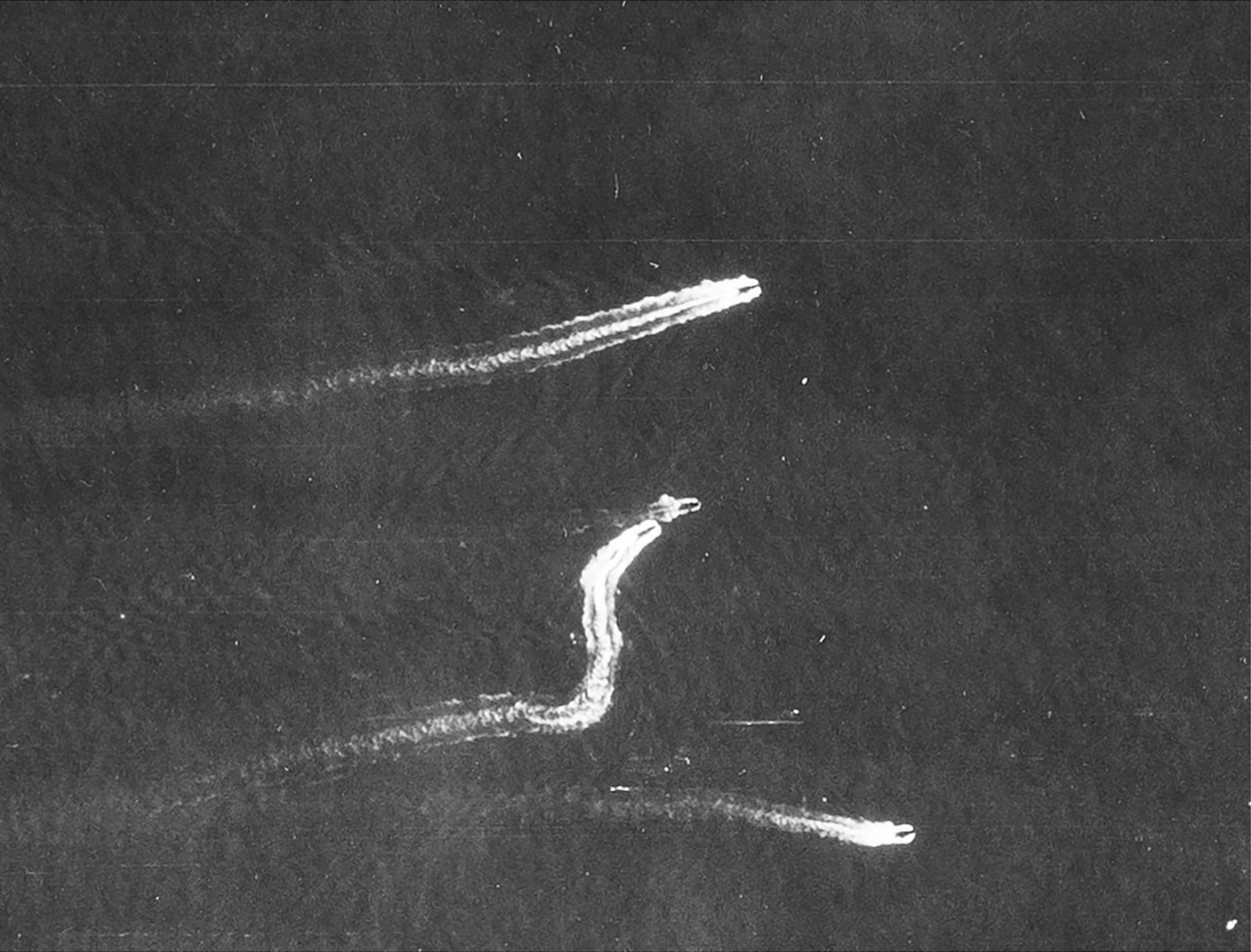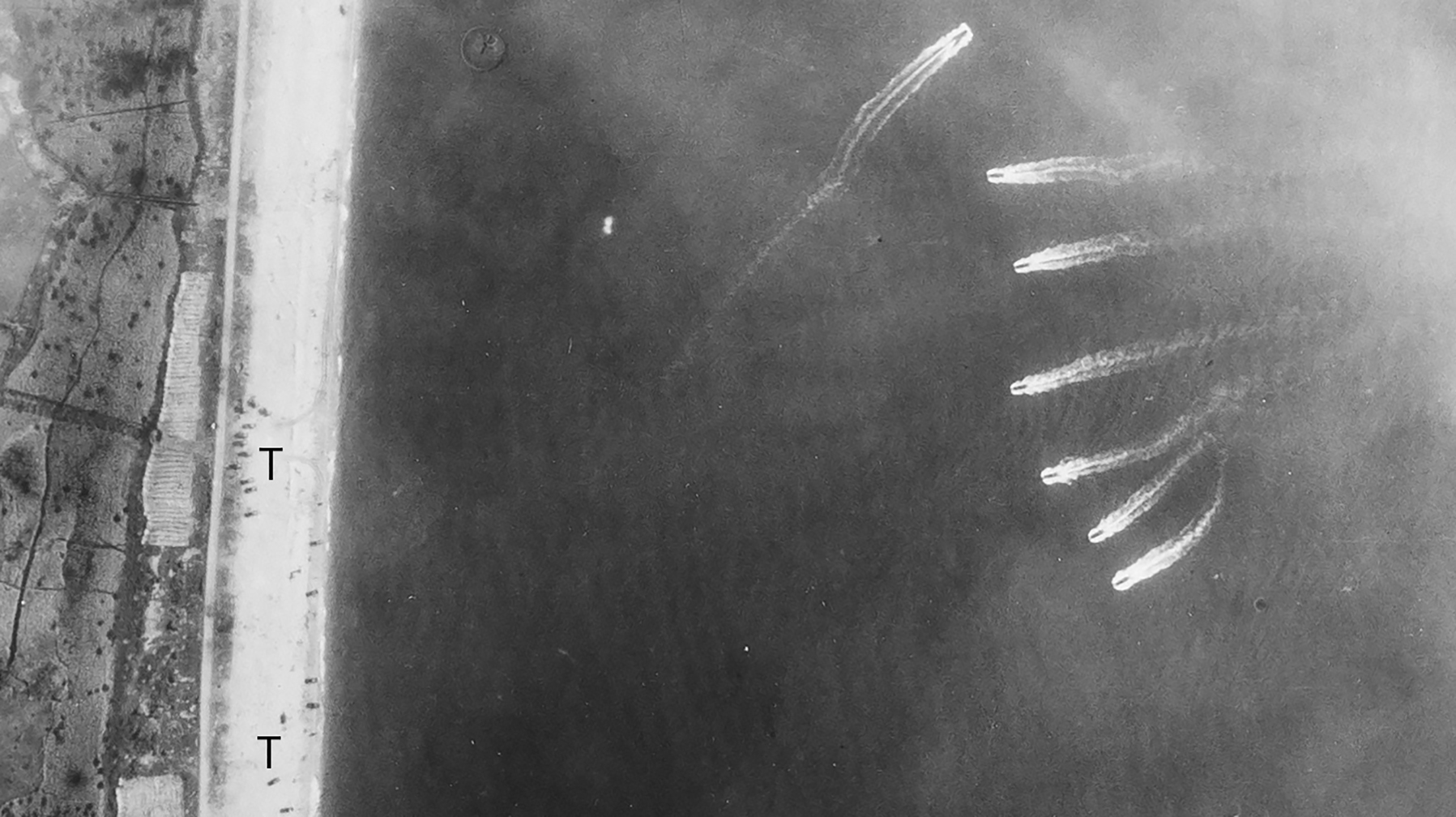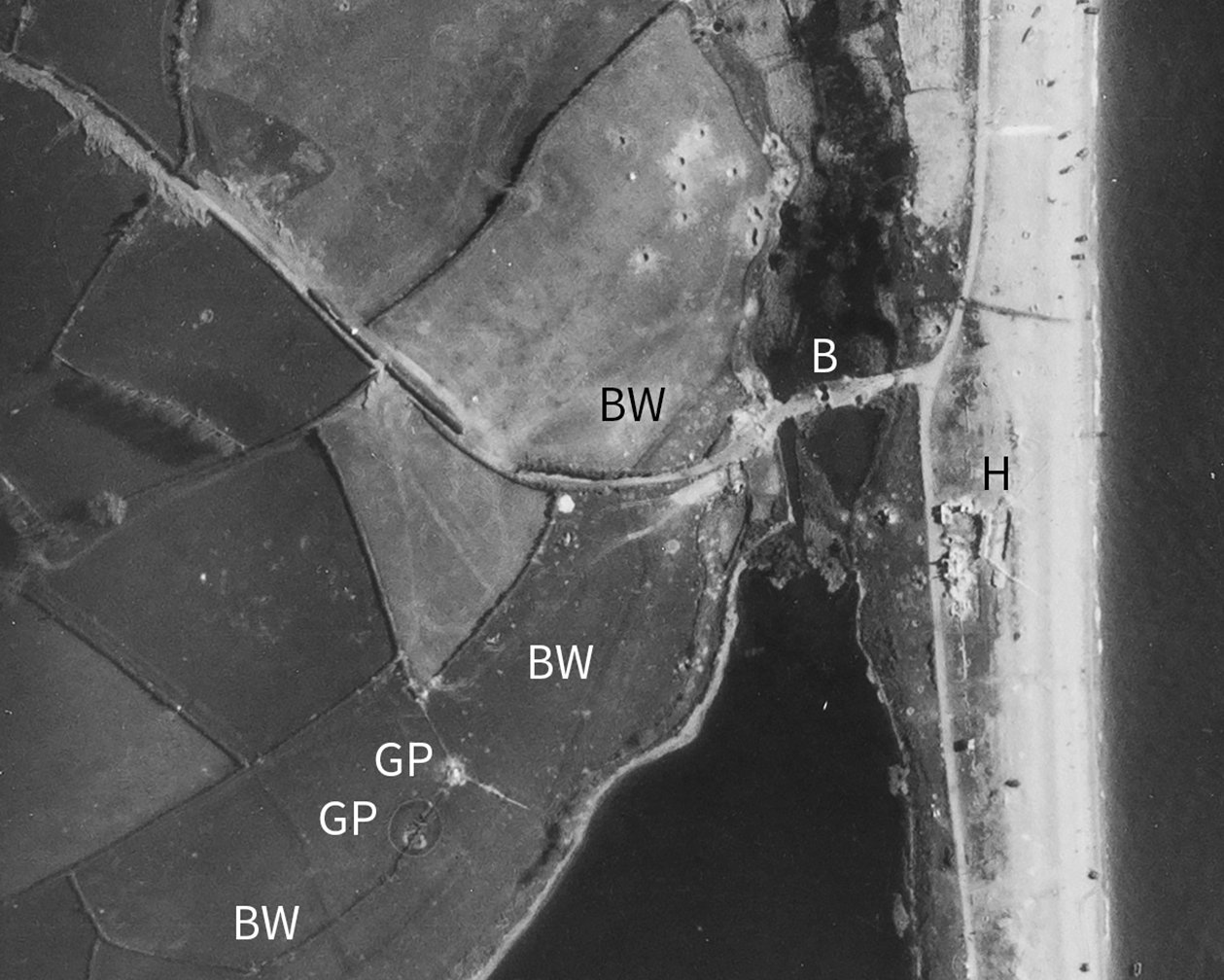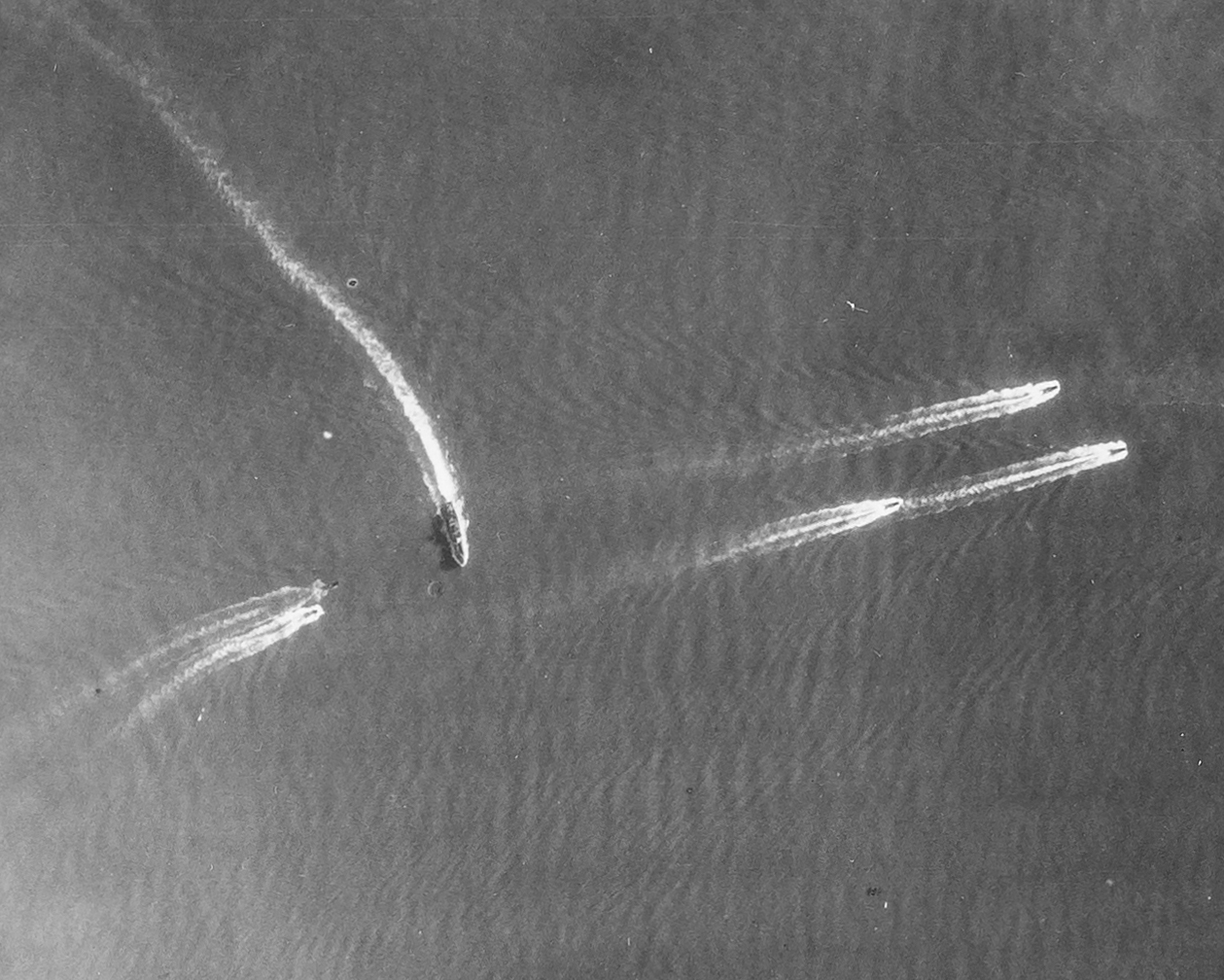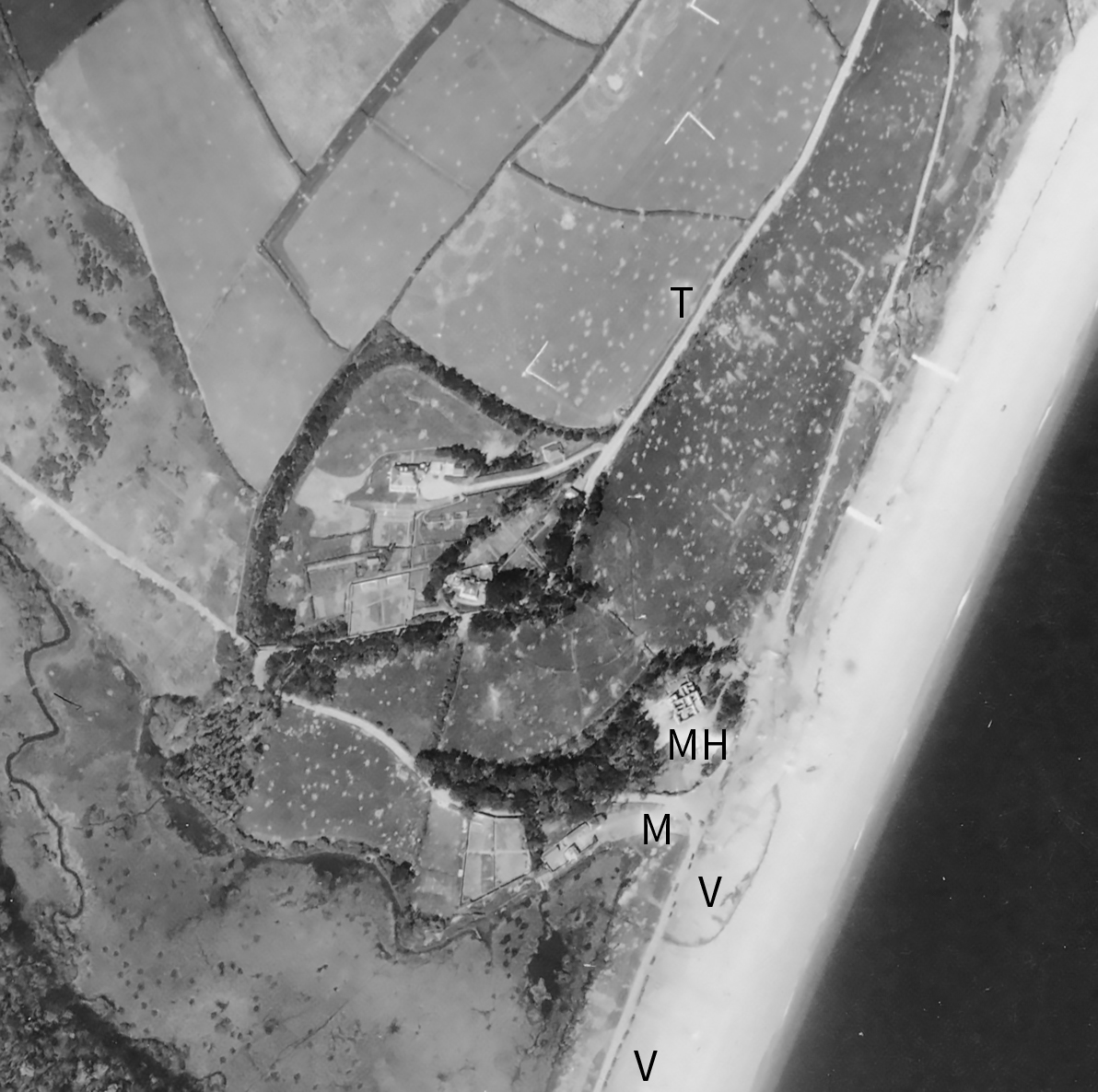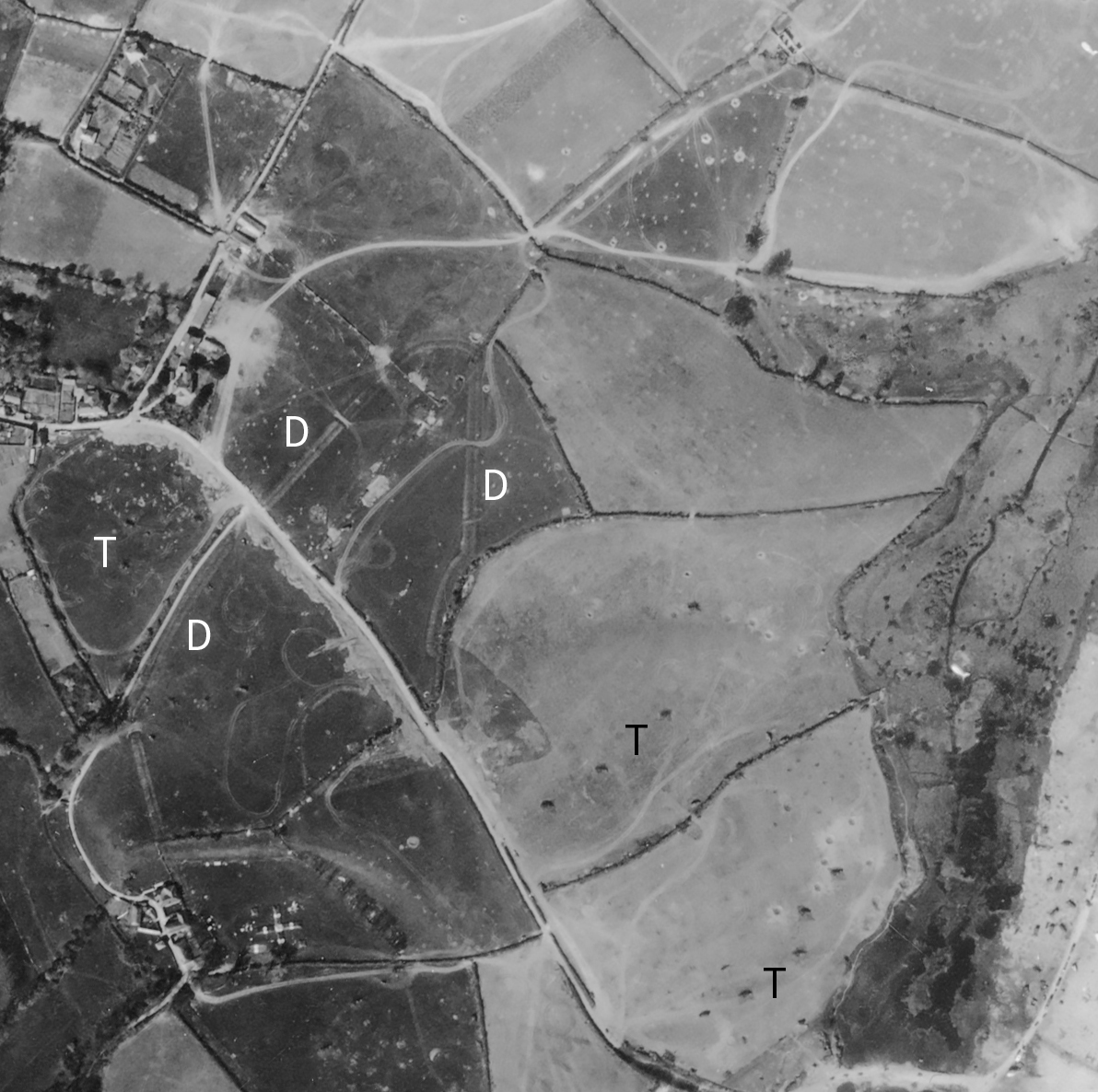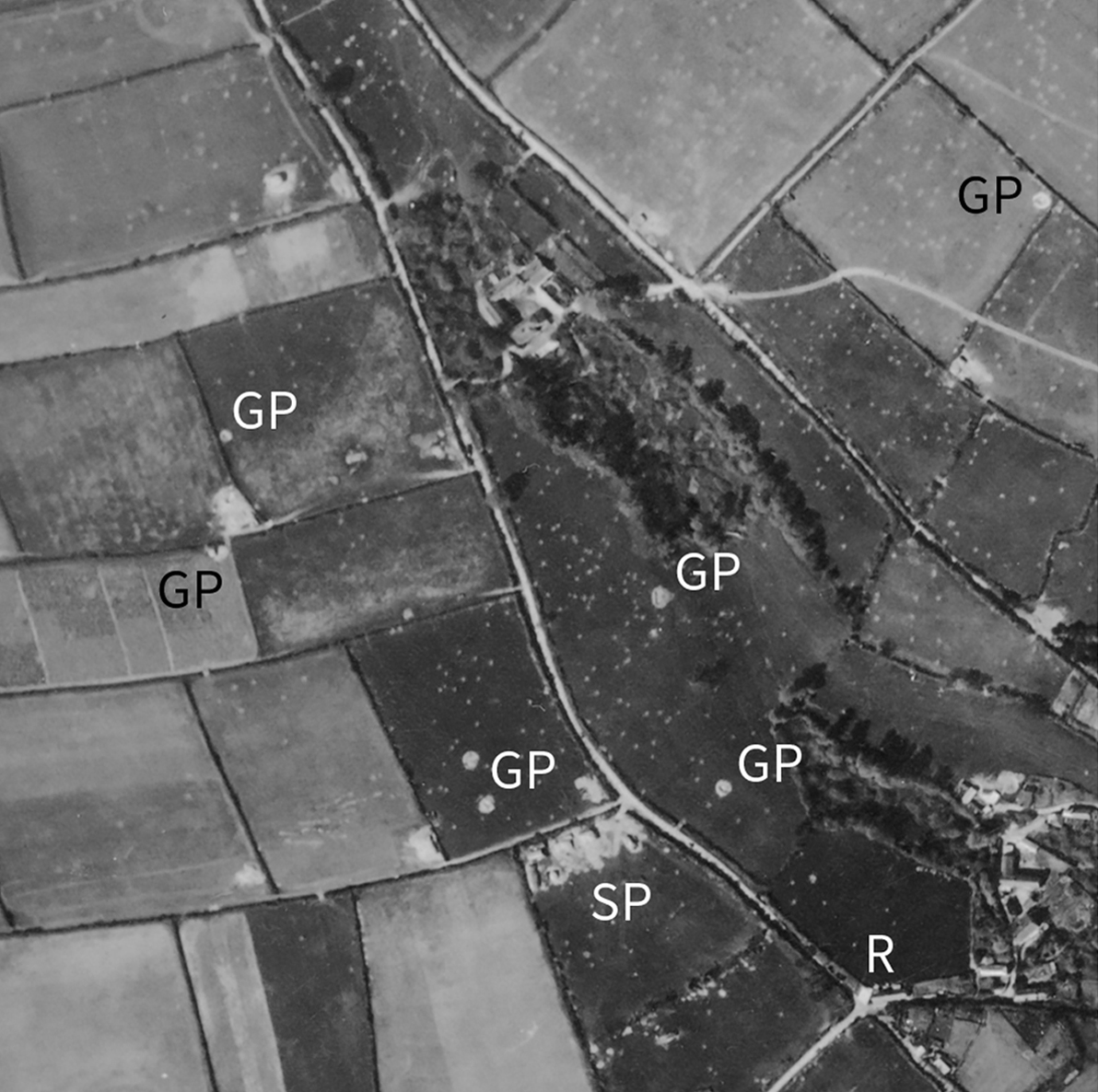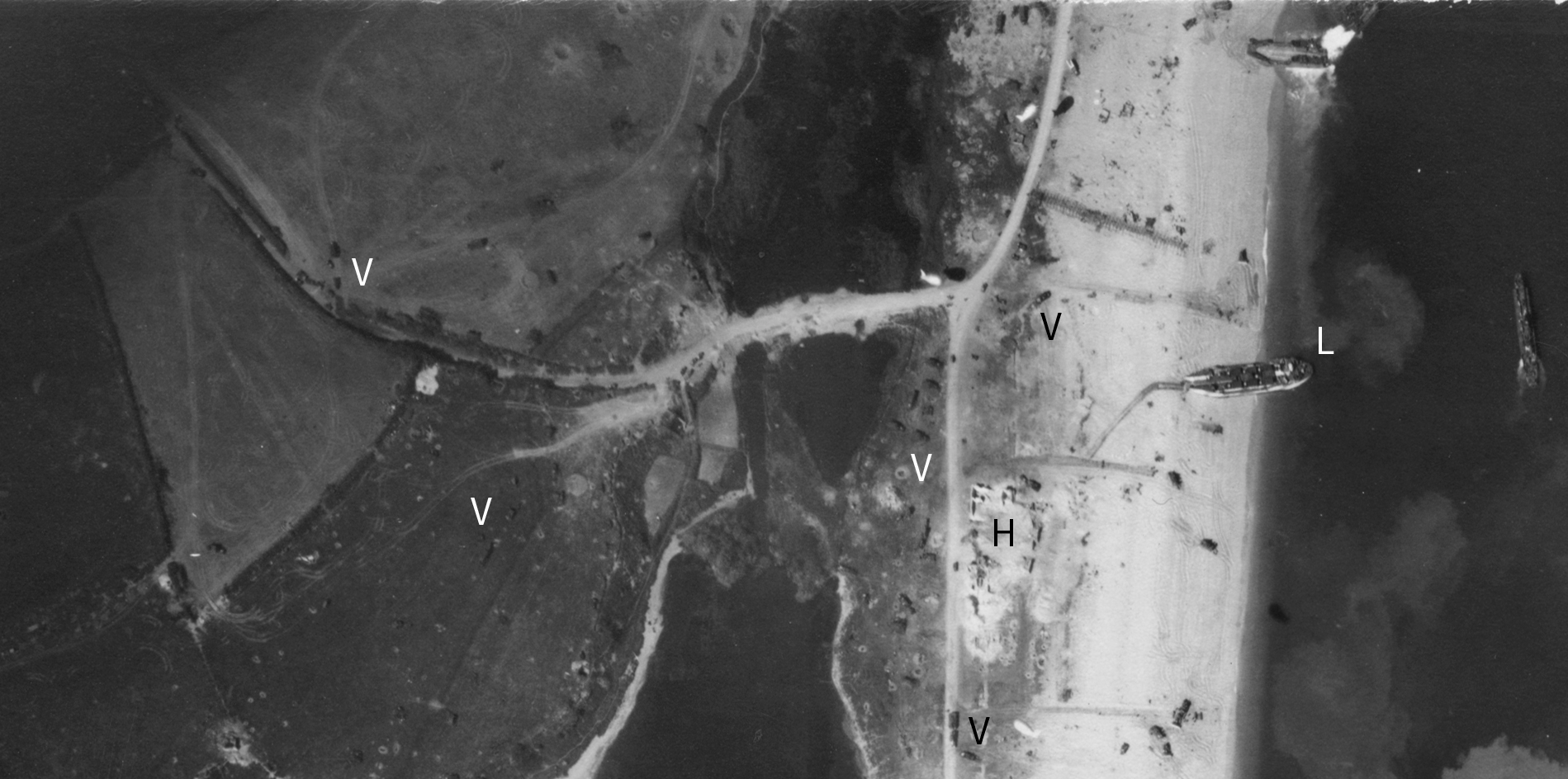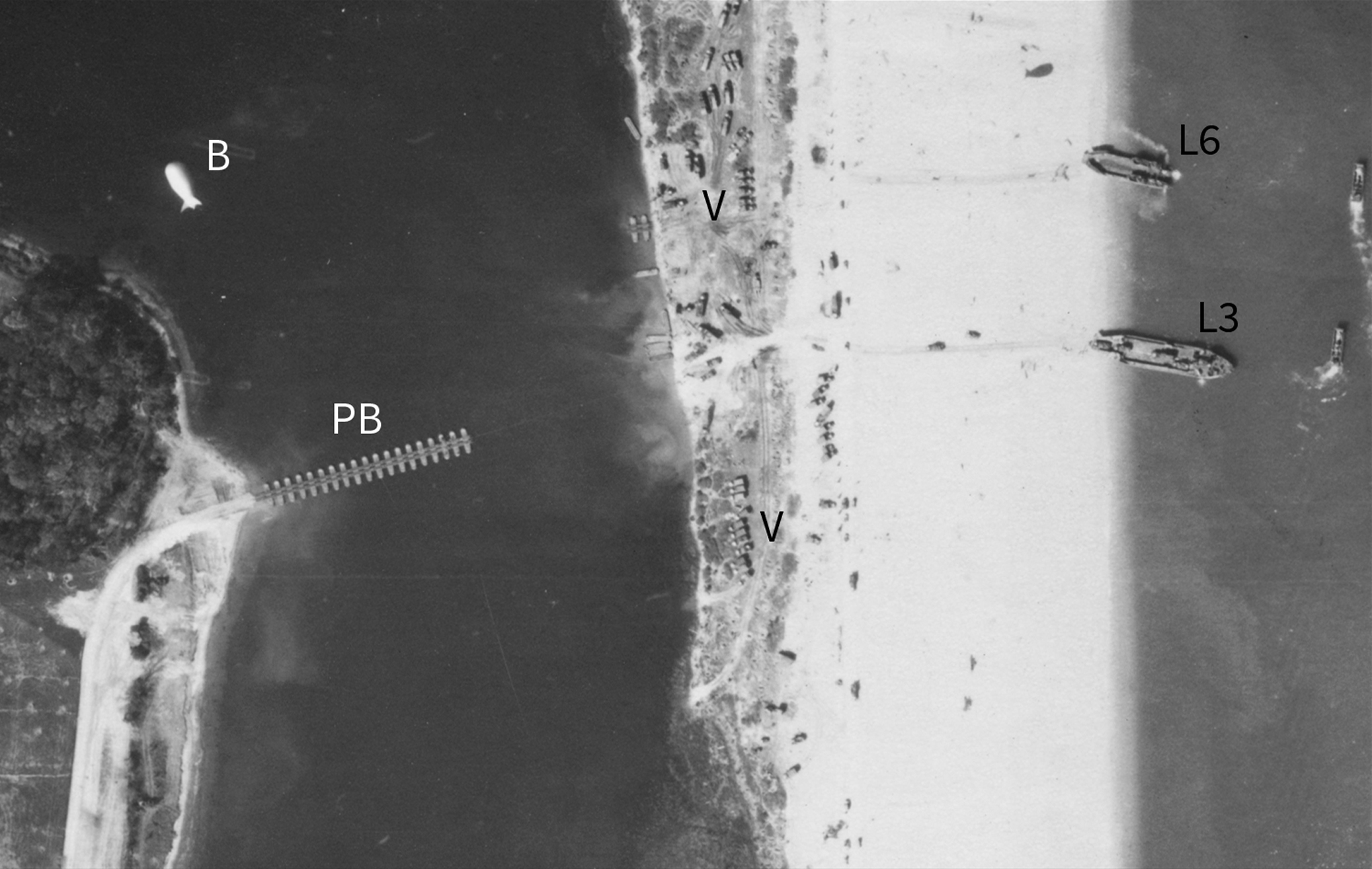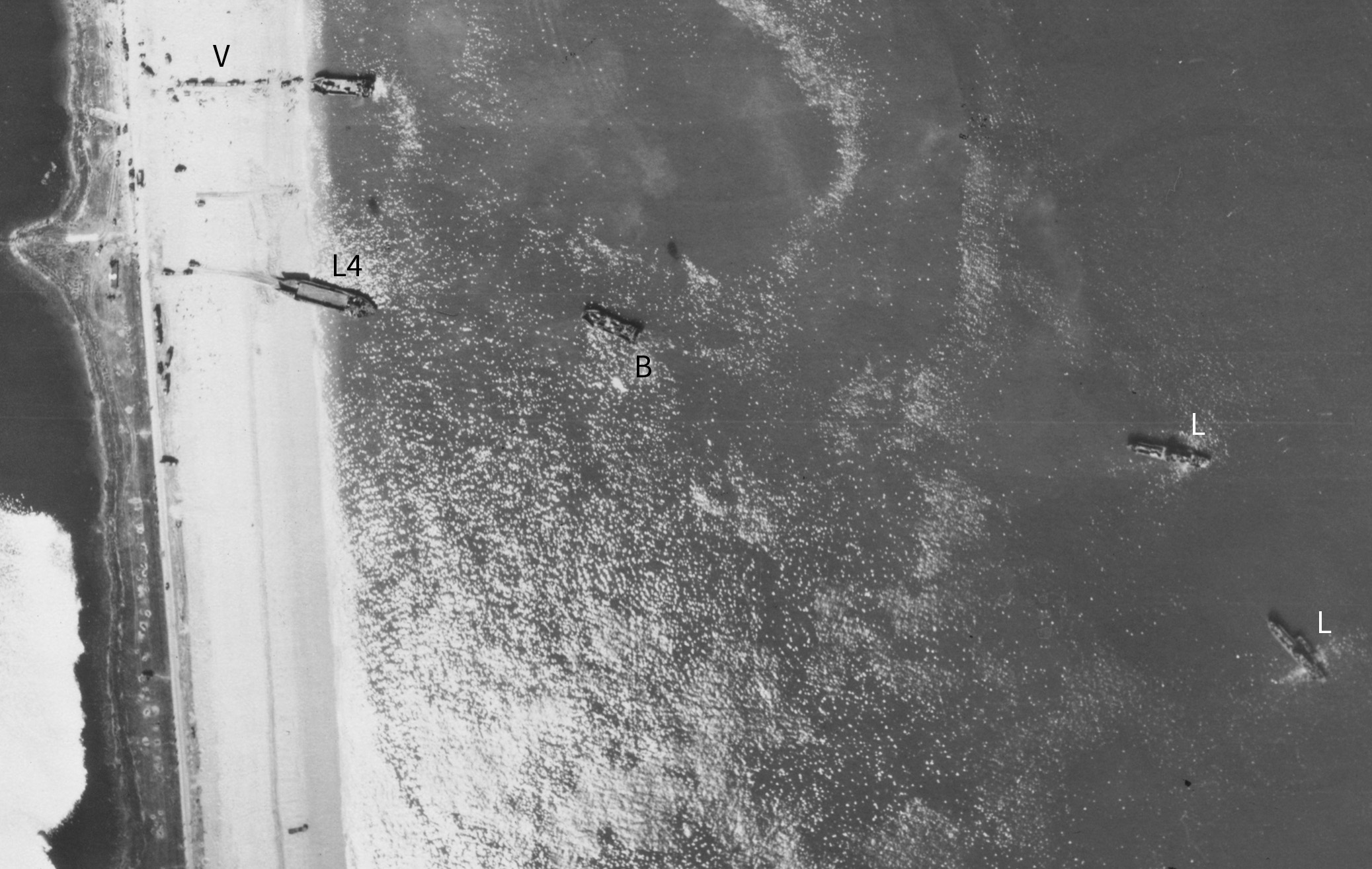Witnessing Exercise Tiger: USAAF Photos from April 1944
Explore aerial photographs capturing Exercise Tiger in action
The United States Army Air Forces (USAAF) reconnaissance aircraft flew hundreds of sorties over England during the Second World War.
These included 2 sorties flown on 27 April 1944 to record events that took place during Exercise Tiger, the practice amphibious assault on the coast of Devon that tragically resulted in the deaths of an estimated 749 United States soldiers and sailors.
Despite this, it was considered a success ahead of the D-Day landings that took place just 6 weeks later.
What was Exercise Tiger?
Exercise Tiger, also known as Operation Tiger, was one of a series of practice exercises for the Allied invasion of Europe. Tiger took place between 22 and 30 April 1944, culminating with a practice assault at Slapton Sands on the Devon coast. While the beach wasn’t a perfect match for those the US forces would assault at Utah or Omaha, the South Hams countryside, with its small fields, narrow lanes and tall hedgerows, was characteristic of the Normandy Bocage landscape.
Slapton Sands had been used for amphibious assault training before the war and small-scale exercises took place in August 1943. However, in order to prepare for D-Day, larger-scale exercises comprising landings by thousands of troops and hundreds of vehicles, mock German defences, pre-assault bombardment, aerial bombing, troop movements inland and the use of live ammunition, were needed.
In order to create a suitable training area, 25 square miles of land had to be evacuated. Compulsory Evacuation Orders were issued in November 1943, giving 6 weeks for residents to evacuate the villages and farms of South Hams. In addition, 6,000 cattle, 12,000 sheep, 10,000 tons of root crops and all farming machinery and implements were removed from the area.
Between the last day of 1943 and 6 May 1944, a total of 12 exercises were carried out in the area. The 11th and 12 exercises, ‘Tiger’ and ‘Fabius I’ were full dress rehearsals for the Corps landings on Utah and Omaha beaches.
Exercise Tiger’s purpose was to practice how to prepare for a beach assault. It was to include 2 waves of beach landings, an advance inland and the landing of further supplies on the beach.
The first phase of the exercise lasted 4 days. It focused on marshalling troops from their camps and loading men and equipment onto landing craft. On the evening of 26 April, the first wave of 30,000 assault troops boarded their transport ships and started a sea journey that simulated the time of a Channel crossing. They arrived off Slapton Sands at dawn on 27 April.
The convoy was escorted by the Royal Navy who provided 4 O-Class destroyers, 3 Motor Torpedo Boats (MTB) and 2 Motor Gun Boats. A further 3 MTBs patrolled off the coast of Cherbourg to intercept any German warships that might venture out into the English Channel.
Once the warships arrived off Slapton Sands, they formed a Bombardment Group, responsible for firing live shells over the landing craft as they began their assault on the beach. This was to accustom the assault troops to the sights, sounds, smells and concussion of a naval bombardment.
What happened on 27 April 1944?
The assault phase of the exercise began at 03:30 when airborne troops were deployed. As no aircraft were available, they were taken to their drop zones by truck.
The seaborne landings did not get off to a good start. They were due to begin at 07:30 but part of the assault convoy was behind schedule. A decision was made to delay the assault by 60 minutes. However, communication problems meant that some landing craft were not made aware of the change and began landing troops at the original time. Consequently, they came under fire from the naval bombardment that should have taken place 50 minutes before they landed. This resulted in several casualties. The situation was made worse as the troops on the beach were unable to communicate with the warships to call off the bombardment.
Following the bombardment, troops from the 1st Engineer Special Brigade went ashore to sweep minefields, open exits from the beach, lay tracked roads, repair Slapton Bridge and establish supply dumps. Assault troops then moved inland to deal with enemy defences and to link up with the airborne troops.
The beach at Slapton Sands was successfully secured by 15:30 on 27 April.
What do the USAAF photographs show?
Historic England Archive’s USAAF Collection of aerial photographs includes photographic prints that show the beach assault phase of Exercise Tiger underway in Start Bay and on Slapton Sands. These remarkable photographs give a birds-eye view of the exercise as it developed, on land and at sea, under the haze of the morning’s smoke screen.
The first sortie (LOC40) appears to have taken place soon after the first wave of the assault had landed. The photographs record lots of activity at sea, including the Royal Navy O-Class destroyers of the Bombardment Force and the movements of landing craft to and from the beach.
007 to 009
Please click on the gallery images to enlarge details from the above photograph.
Frame 0085 (below) shows a flurry of landing craft of different types, some heading ashore, others returning to their transport ships. The US Navy had insufficient landing craft available for the exercise and several Landing Craft Tanks were crewed by the Royal Navy.
011 to 013
Please click on the gallery images to enlarge details from the above photograph.
The aerial photographs show how Exercise Tiger progressed through the morning of 27 April. The beach landing continued under the drifting smoke screen. Tanks and other vehicles head up the beach. More landing craft deliver troops and cargo to the beach, while empty vessels return to their transport ships. The majority land their troops between The Royal Sands Hotel to the south, and Strete Gate to the north.
015 to 017
Please click on the gallery images to enlarge details from the above photograph.
The second sortie (LOC41) was undertaken later in the day and records the assault force moving inland. The photographs show shell craters from the morning’s bombardment, which reach as far as 2km inland, well beyond the target areas marked out on the ground. By about midday Slapton Bridge had been temporarily repaired. The tanks crossing the bridge leave tell-tale tracks in the fields as they drive towards Slapton village. More personnel and vehicles continue to arrive on the beach.
019 to 021
Please click on the gallery images to enlarge details from the above photograph.
The beach remained congested as the day progressed. More detail can be seen in an aerial photograph taken from a lower height in the early afternoon of 27 April. Tanks and other vehicles gather on the beach. Matting has been laid by engineers to aid vehicles and infantry moving up the beach. Landing Craft Tanks and Landing Craft Infantry continue to sail in from Start Bay.
023 to 025
Please click on the gallery images to enlarge details from the above photograph.
What happened on 28 April 1944?
The following day, Exercise Tiger witnessed another tragedy. Convoy T-4 of 8 transport ships, escorted by HMS Azalea sailing from Plymouth and Brixham, was attacked in Lyme Bay by heavily armed German Navy fast attack boats, known to the Allies as E-boats. The convoy carried the second wave of troops and equipment that was intended to reinforce the first assault.
The convoy was spotted by 9 E-boats that sailed from Cherbourg. Soon after midnight, 6 attacked in pairs with torpedoes and gunfire. The remaining 3 joined the attack soon after.
T-4 was supposed to have been protected by 2 Royal Navy warships, but 1 had to leave the convoy due to damage received in a collision. Its replacement didn’t arrive in time to protect the transport ships. Poor communication between the remaining escort and the transports also contributed to the disaster.
2 LSTs (Landing Ship, Tank) were sunk by torpedoes. A third LST was set on fire but was able to return to shore. 631 soldiers and sailors were killed aboard the three LSTs. A fourth was damaged by friendly fire from another LST that was attempting to fire on one of the E-boats. The E-boats eventually withdrew after coming under fire from the LSTs and HMS Azalea.
Hundreds of US servicemen were killed during Exercise Tiger. Reports in April and August gave totals of 749 or 639 dead. 248 bodies were recovered and were sent for burial at Brookwood American Cemetery in Surrey.
The aftermath and remembrance
Following the E-boat attack, there were significant Allied concerns that D-Day would be compromised. 10 American officers lost at sea on 28 April knew details about the invasion. D-Day was nearly called off until all 10 and the papers they were carrying were found. Survivors of the disaster were sworn to secrecy.
Despite the casualties, Exercise Tiger was considered a success as several lessons were learned. These lessons were applied and refined during Exercise Fabius I, the last major exercise at Slapton Sands. They undoubtedly contributed to a reduction of casualties on D-Day, which took place just 1 month later.
While the tragic events of Exercise Tiger weren’t covered up, it wasn’t until the 1980s that a memorial was erected at Slapton Sands. Due to the dedication of local resident, Ken Small, a Sherman tank, sunk during the exercise, was raised and placed at Torcross as a memorial to the US personnel who died during Exercise Tiger.
In April 2020, the wrecks of the 2 LSTs that were sunk by the E-boats on 28 February 1944 were protected by the Department for Digital, Culture, Media and Sport on the advice of Historic England. The scheduling of USS LST-507 and USS LST-531 means that divers can dive wrecks but that the wrecks themselves and their contents are protected.
Who took the photographs?
For the USAAF’s strategic bombing of Nazi Europe to be effective, they needed intelligence on targets. The USAAF created aerial reconnaissance units to photograph sites in occupied countries and Germany. These photographs and their interpretation would provide much of the necessary intelligence.
The USAAF established photographic reconnaissance (PR) units at airfields in England. Many of the photographs in the Historic England Archive’s USAAF Collection were taken by aircraft of 2 PR Groups: the Eighth Air Force’s 7th PR Group and the Ninth Air Force’s 10th PR Group.
The 2 sorties recording Exercise Tiger on 27 April 1944 were flown by an aircraft from 30 Squadron, 10th PR Group, based at RAF Chalgrove (USAAF Station 465) in Oxfordshire. On D-Day itself, aircraft from the 10th PR Group would fly 63 missions in support of the invasion. By the middle of August 1944, all the 10th Group’s squadrons had been relocated to France.
The Historic England Archive’s USAAF Collection comprises over 20,000 photographic prints taken by USAAF photographic reconnaissance (PR) aircraft during the Second World War. Nearly 19,000 frames have been catalogued. You can find out more about our USAAF Collection in Baseball and Bombers and discover more aerial photographs using our Aerial Photo Explorer map.
Sources
- Bernage, G, et al, 1993, 'Overlord: Conception, Préparation, Réalisation: Jour J en Normandie': Album Memorial, France: Editions Heimdal
- Bradbeer, G, 1973, 'The Land Changed its Face: The Evacuation of the South Hams, 1943-1944', Newton Abbot: David and Charles
- Delve, K, 2007, 'The Military Airfields of Britain. Northern Home Counties: Bedfordshire, Berkshire, Buckinghamshire, Essex, Hertfordshire, London, Middlesex, Oxfordshire', Marlborough: Crowood Press
- Freeman, RA, 1986, 'Airfields of the Eighth Then and Now', London: Battle of Britain Prints International Ltd
- Freeman, RA, 'UK Airfields of the Ninth: Then and Now', London: Battle of Britain Prints International Ltd
- Gawne, J, 2001, 'Spearheading D-Day: American Special Units in Normandy', Paris: Histoire & Collections
- Hoyt, EP, 1987, 'The Invasion Before Normandy: The Secret Battle of Slapton Sands', London: Hale
- Ivie, TG, 1981, 'Aerial Reconnaissance: The 10th Photo Recon Group in World War II', Fallbrook: Aero Publishers, Inc
- Lawrence, W, 'Exercise Tiger: The Forgotten Sacrifice of the Silent Few', Fonthill Media Limited
- Lewis, N, 'Channel Firing: The Tragedy of Exercise Tiger', Viking

